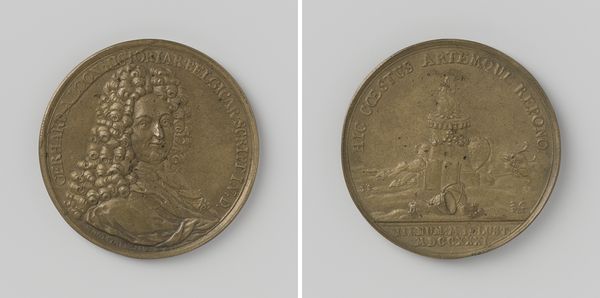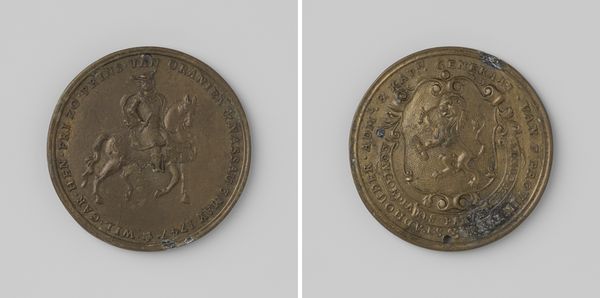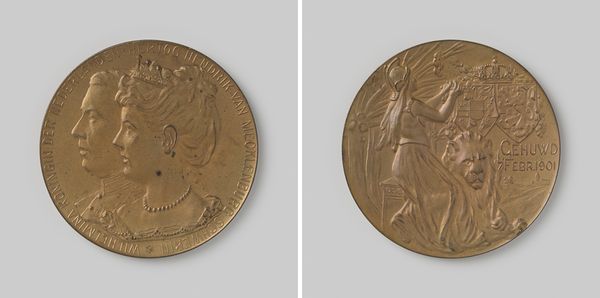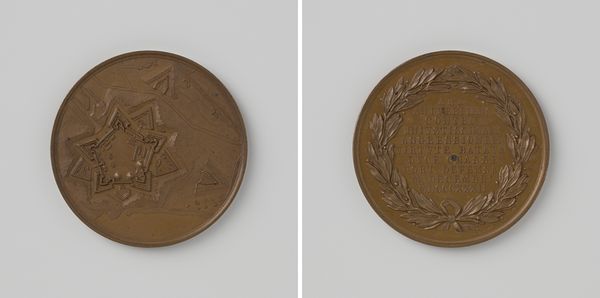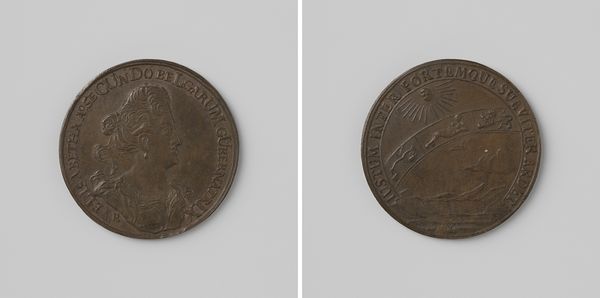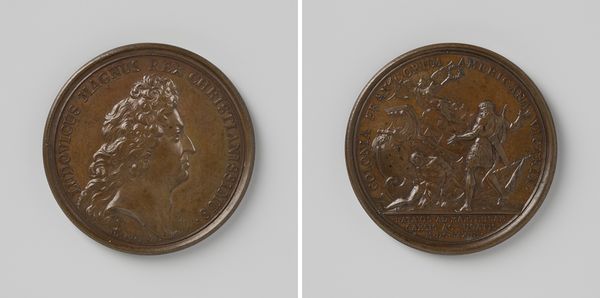
metal, relief, bronze
#
portrait
#
neoclacissism
#
metal
#
detailed texture
#
relief
#
bronze
#
history-painting
#
erotic-art
Dimensions: diameter 2.7 cm, weight 9.02 gr
Copyright: Rijks Museum: Open Domain
This bronze medal, commemorating the death of the Duke of Orleans, was made in France in 1842 by A. Barre. It is a small object, less than three centimeters in diameter, but it speaks volumes about the politics of imagery and the social conditions that shape artistic production. The medal presents us with two distinct images. On one side, a profile of Louis Philippe I, King of the French, and on the other the Duke of Orleans on horseback. Consider how the imagery presents the monarchy: Louis-Philippe is depicted as a strong and virile leader, while the Duke of Orleans on horseback evokes power and authority. The medal served to reinforce the Bourbon monarchy's legitimacy. To understand the medal better, we might turn to historical archives to understand how the monarchy controlled imagery. We must look at how institutions shaped the production and reception of art. The meaning of this medal is contingent on the social and institutional context in which it was made.
Comments
No comments
Be the first to comment and join the conversation on the ultimate creative platform.

